 The first thing we noticed about arriving to the Dubrovnik Airport was the relaxed security. Tourism might be the largest industry in the country and the security guards were not going to jeopardize any part of it. They barely looked at our passports; over a hundred people passed through he passport control in less than 5 minutes. In Greece, this would have taken at least an hour. In London, we’d be there all day. Leaving Dubrovnik was even more relaxed. No need to remove the laptop or the plastic bag of liquids. The bags went through the security detector but the guards were too busy having a conversation with each other to even look at the monitor screen. I don’t know if this is a good thing or a bad one.
The first thing we noticed about arriving to the Dubrovnik Airport was the relaxed security. Tourism might be the largest industry in the country and the security guards were not going to jeopardize any part of it. They barely looked at our passports; over a hundred people passed through he passport control in less than 5 minutes. In Greece, this would have taken at least an hour. In London, we’d be there all day. Leaving Dubrovnik was even more relaxed. No need to remove the laptop or the plastic bag of liquids. The bags went through the security detector but the guards were too busy having a conversation with each other to even look at the monitor screen. I don’t know if this is a good thing or a bad one.
The second thing we noticed about the Croatia was how clean it is; no graffiti on the walls. In fact, the old stone building in the old town look as if they were just laid into place, which in many cases is the truth. The city was bombed pretty badly on October 1, 1991 when the Serbian lead Yugoslavian People’s Army attacked the city hard. The shelling went on for 7 months and in the end, over 30% of Old Dubrovnik was destroyed. The Serbs called it a Civil War; the Croatians called it either a War of Independence (on their part) or a War of Aggression (on the Serbians). No matter what name you attach to it, over 110,000 people were killed and over 1.8 million were displaced. In Dubrovnik, 114 were killed.
The city fortress held off invaders from the 15th through the 18th century but then in 1806, when General Alexandre Lauriston, commander of Napoleons Army, offered the city French protection from the Russian fleet that just appeared in the harbor, they accepted. Napoleon also told them they would be able to keep their independence, but then Napoleon said a lot of things he never really meant.
After the fall of Napoleon, the 1815 Congress of Vienna redrew the map of Europe and Croatia ended up as part of the Austo-Hungarian Empire. After the First World War, the country was thrown into the Serb-Slavic-Croatian mixture known as Yugoslavia. The Italians invaded from 1941-43, then the Nazis came in.
Towards the end of the war, Churchill and Roosevelt promised to take care of them. And so they did; they gave them over to Stalin and the strong arm of Marshall Josip Broz Tito.
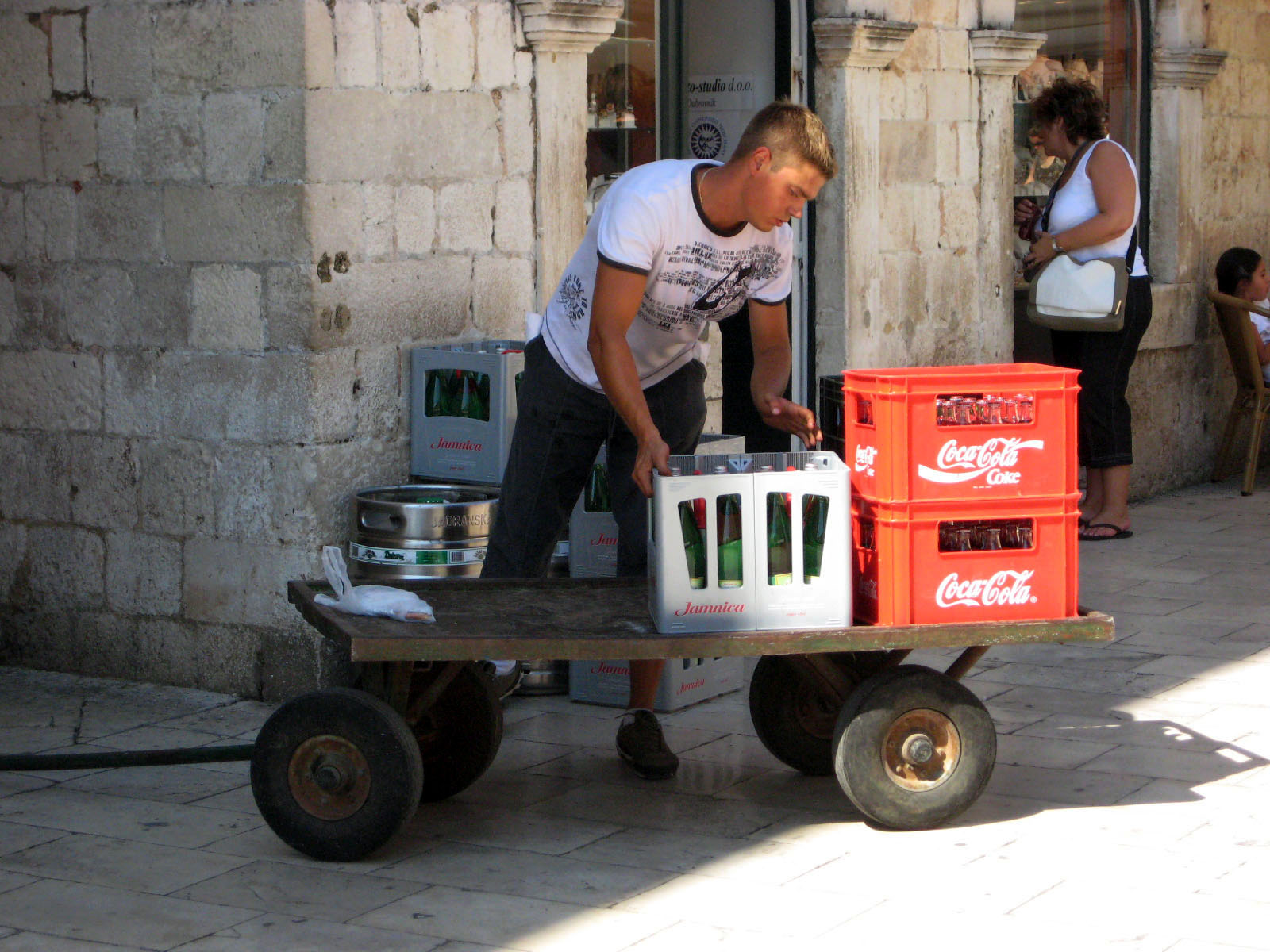 The city is really beautiful, one of the most beautiful 15th century city we’ve ever seen. Maybe it’s because we’ve come here in the summer filled with happy tourists relaxing on the aquamarine Adriatic Sea, the sun bleached stone buildings and the outdoor cafes linked together from one end of town to the other, as if they all belonged to the same owner. Over 4,000 people live inside the walls. In the summertime, the population probably triples.
The city is really beautiful, one of the most beautiful 15th century city we’ve ever seen. Maybe it’s because we’ve come here in the summer filled with happy tourists relaxing on the aquamarine Adriatic Sea, the sun bleached stone buildings and the outdoor cafes linked together from one end of town to the other, as if they all belonged to the same owner. Over 4,000 people live inside the walls. In the summertime, the population probably triples.
But even with all the people, things move at a very relaxed pace. There are no cars in the city; no motorcycles, no bicycles, no roller-skates, no skateboards. Most all the merchandise is delivered the same way they’ve been doing it for hundreds of years, by hand pushed wagons. You really have to be in good shape to be a deliveryman in Dubrovnik.
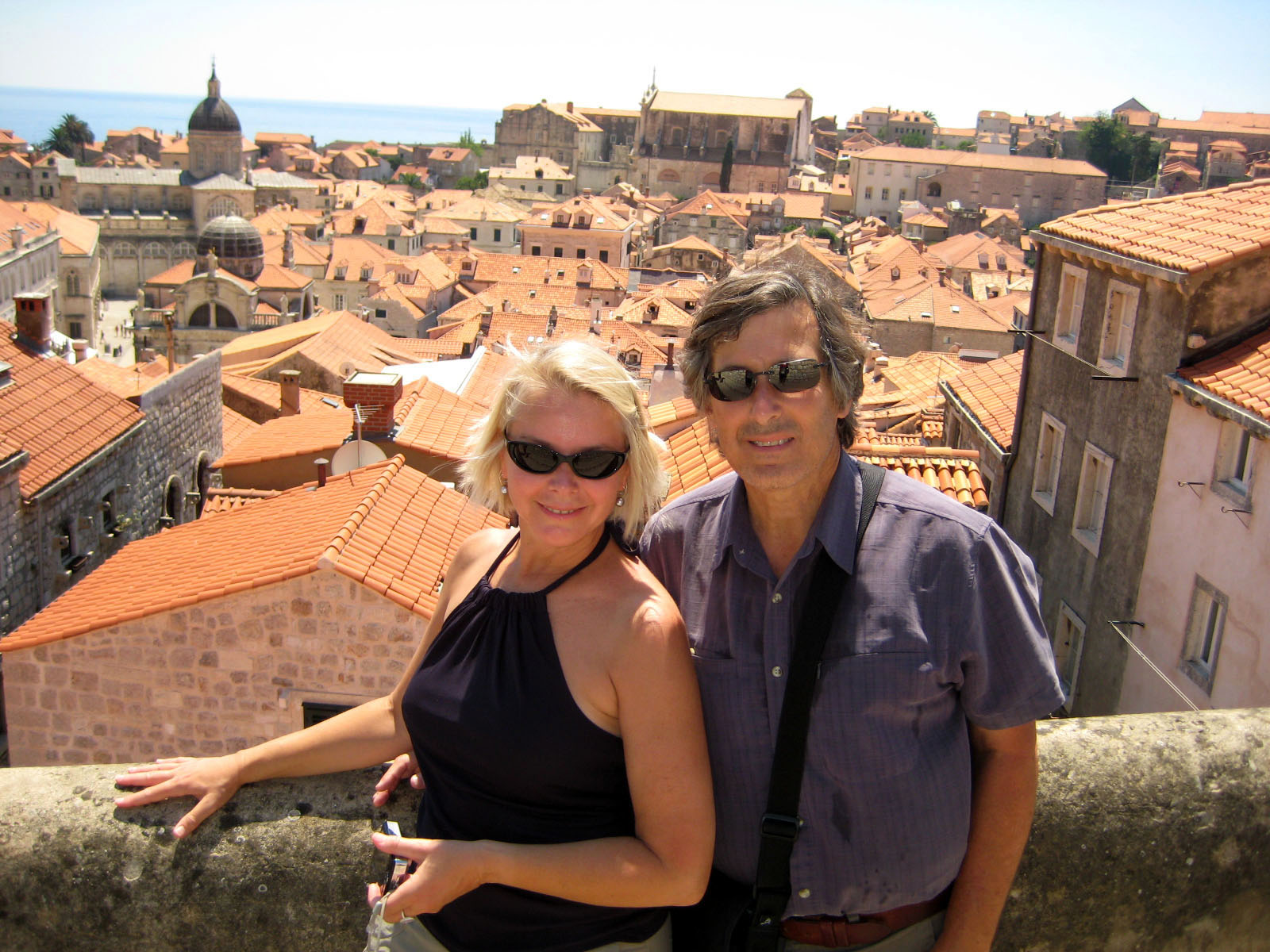 The walls of the city cover about 2km in length. It takes about 45 minutes to walk around them but it was one of the best walks we’ve had since the Great Wall of China. The views from up on the walls are amazing.
The walls of the city cover about 2km in length. It takes about 45 minutes to walk around them but it was one of the best walks we’ve had since the Great Wall of China. The views from up on the walls are amazing.
Tourists do come from all parts of Europe but what we’ve mostly seen are Italians and Brits.
We’re here during the annual music festival, but that might not be good news for anyone looking for slut goddesses or baggy pants rappers. The music festival in Dubrovnik is heavier of the classical side, filled with chamber orchestras, Jazz quartets and Croatian folk concerts. Concert stages are set up all over the city. One of the favorite locations is The Rectors palace, a 1464 Venetian style Palace built by Florentine architect Michelozzo at the same time he was building Cosmo de Medici’s Palace in Florence. The acoustics are renowned throughout the world.
Summertime in Dubrovnik also brings in lots of street performers, guitarists, singers, violin duets, flute trios and a guitar strumming harmonica blowing singer we called Bob Dylanovic. So far the Peruvian panpipe bands haven’t come here yet and fortunately, the street mimes are nowhere in sight; no signs of the painted human statues or that annoying Pharaoh-mummy guy either.
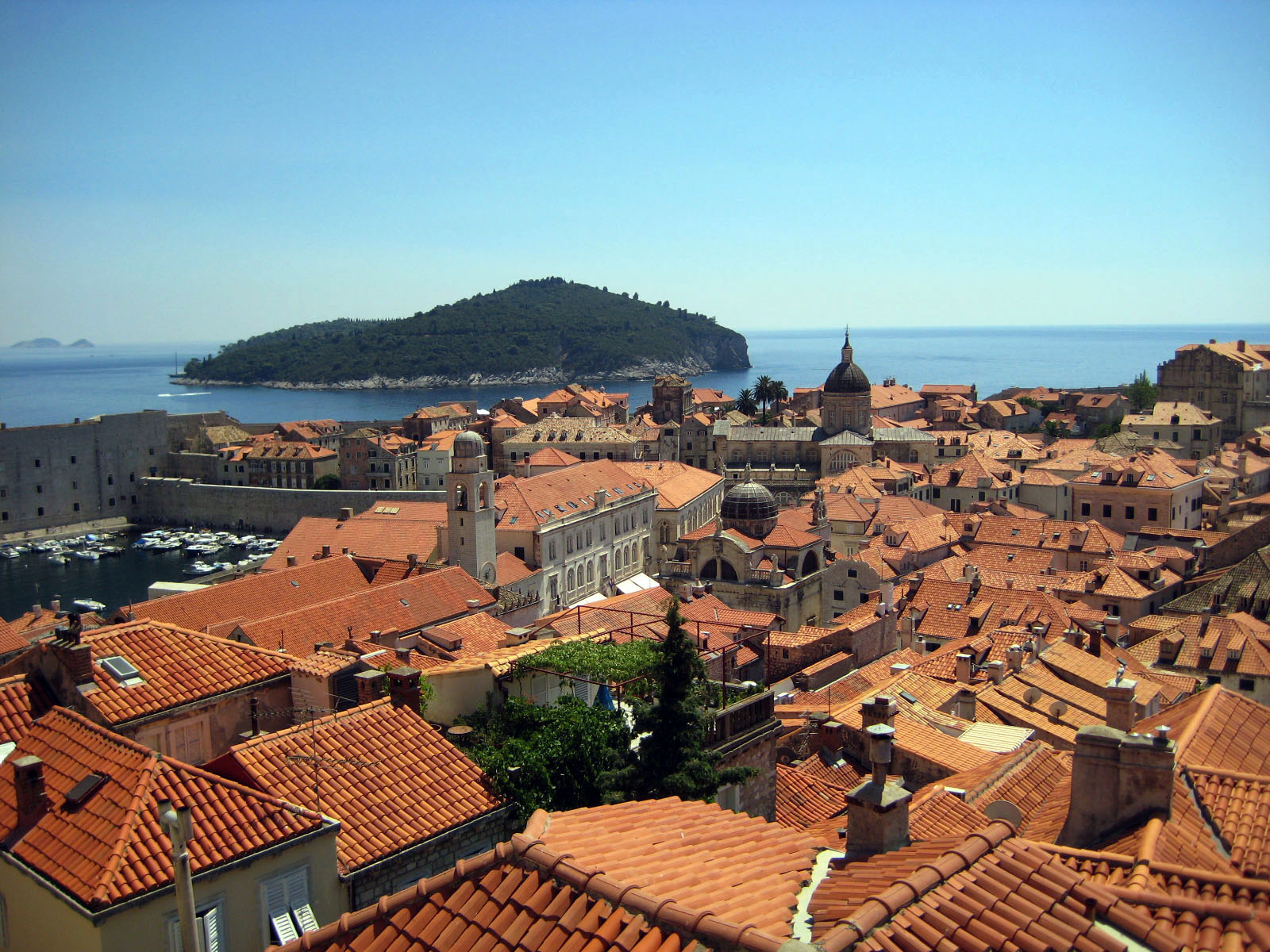 The music festival also features Shakespeare performances on the island of Lokrum, a 15 minute boat ride from the Dubrovnik harbor.
The music festival also features Shakespeare performances on the island of Lokrum, a 15 minute boat ride from the Dubrovnik harbor.
Well, after all, this is the Illyria of Shakespeare’s “Twelfth Night”.
On his way back from the crusades Richard the Lionhearted was shipwrecked on the island of Lokrum. He gave thanks to the people of Ragusa (the old name of the city) by giving them money to build a chapel on the island. A Benedictine monastery was added to the site in the 11th century. And all was well here for about 800 years until Napoleon came.
Napoleon disbanded the monastery and took possession of the island. That’s when the curse began. As the story goes, the monks spent their last night on the chanting a curse upon anyone who would own the island after their departure. Napoleon’s three representatives were the first to go; one was drowned, one killed by his servant and the third, defenestrated.
In 1859, Maximilian, the brother of Emperor Franz Joseph of Austria bought the island. He planted gardens, imported exotic peacocks and slept in the monk’s cells. In 1863 Napoleon III offered Maximilian the title of Emperor of Mexico. In 1867, four years later, he was put in front of a firing squad and killed. The curse continued.
Between 1867 and 1880 the island passed hands through several businessmen who lost their money and reputations within months of signing the ownership papers. They got off easy.
In 1880, the Austrian Emperor Franz Joseph bought the island back. His son Rudolf celebrated his honeymoon on Lokrum; a few years later, he killed himself at his hunting lodge known as Mayerling near Vienna after first killing his 17yr old mistress. According to the coroner’s report Rudolf shot his mistress in the head, then sat by her body for several hours before shooting himself.
Nothing of the grand palace remains today except some ruins and some peacocks that might have descended from the gardens of Maximilian. I think people are afraid to build anything else on the island. We had no interest to even visit. I have a thing about cursed places. I just leave them alone.
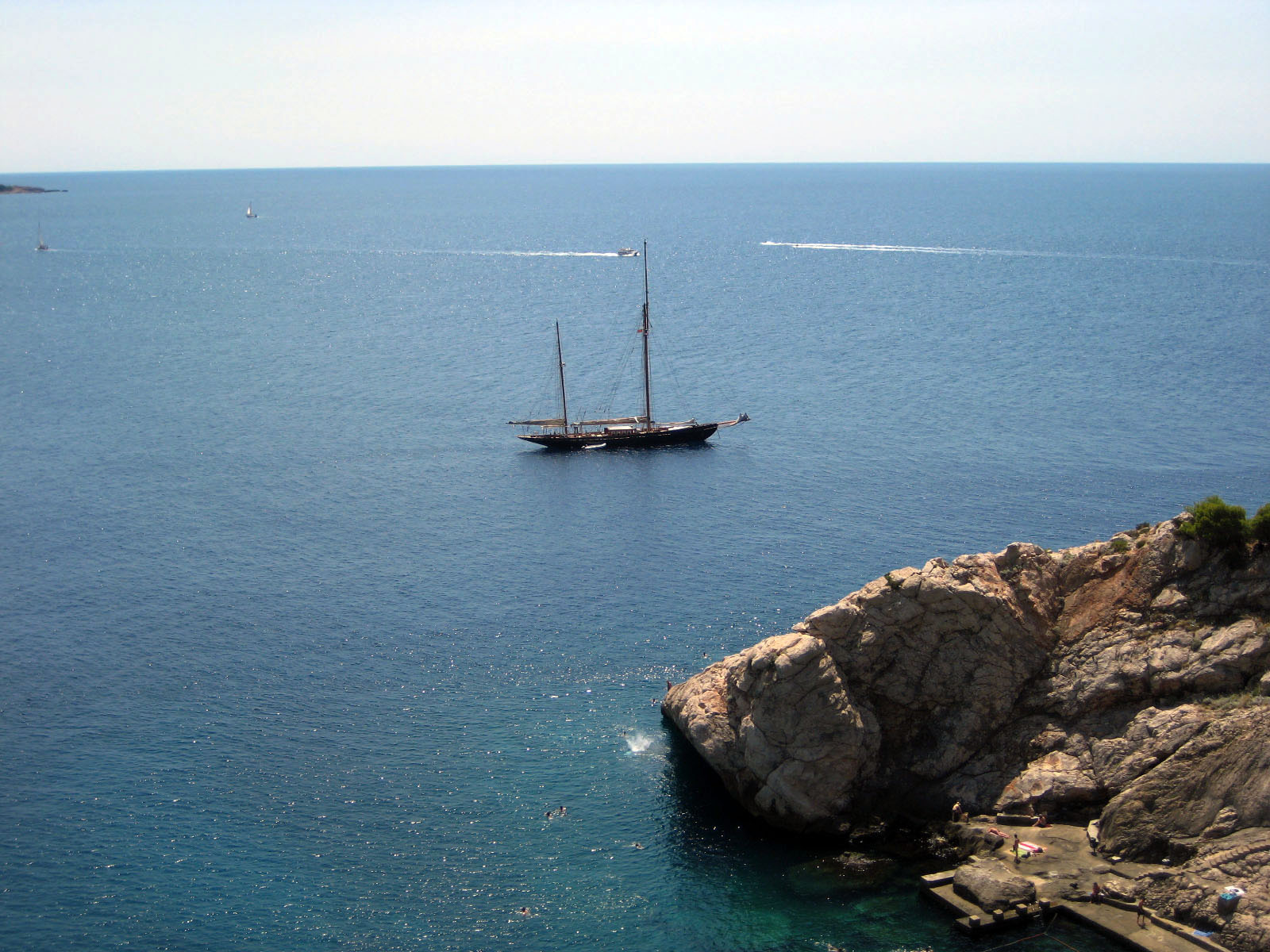 Our hotel is a 20 minute walk from the old town (10 minutes in hotel distances). Our room overlooks the Adriatic Sea and a really nice beach, it’s quiet and we have a terrace. In the old town, it’s crowded with tourists. I think we made the right decision. We sit on the terrace, watch the local boys dive off the cliffs and watch the ships come in and out of the harbor. There are a couple of old replicas of 16th century sailing ships that really add a great historical flavor.
Our hotel is a 20 minute walk from the old town (10 minutes in hotel distances). Our room overlooks the Adriatic Sea and a really nice beach, it’s quiet and we have a terrace. In the old town, it’s crowded with tourists. I think we made the right decision. We sit on the terrace, watch the local boys dive off the cliffs and watch the ships come in and out of the harbor. There are a couple of old replicas of 16th century sailing ships that really add a great historical flavor.
The mega yacht “Christine O” docked in the harbor a few days ago, the famous floating palace of Aristotle Onassis. The new owner of the yacht rents it out for a mere €65,000 a week.
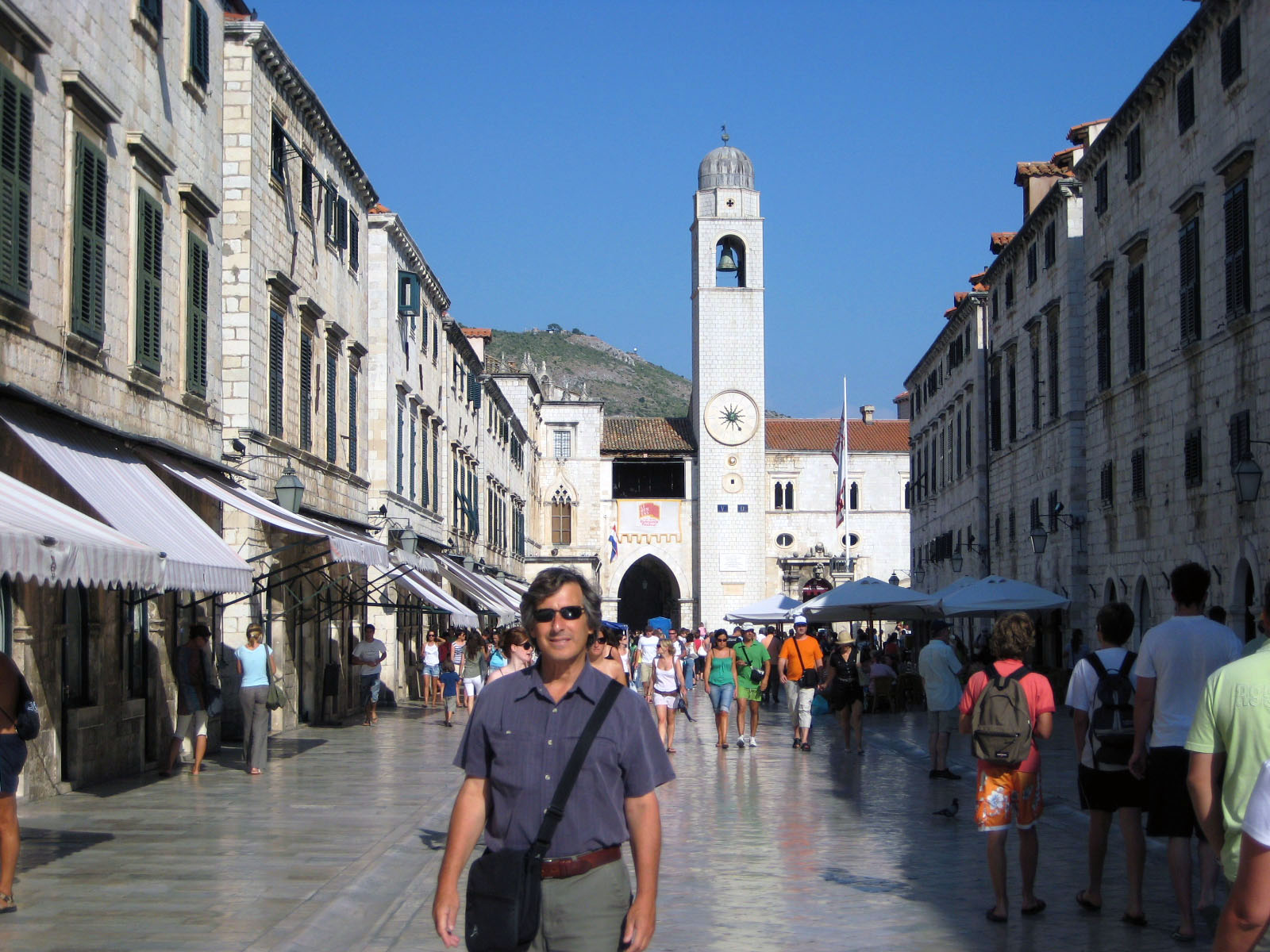 The main entrance to the Old City at the Pile gate leads into the Stradun.
The main entrance to the Old City at the Pile gate leads into the Stradun.
The original name of this 1000 ft long promenade was the Placa, but when a Milanese officer in the Austo-Hungarian army saw it for the first time he remarked “che stradone” (what a big street). It’s been called the Stradun ever since.
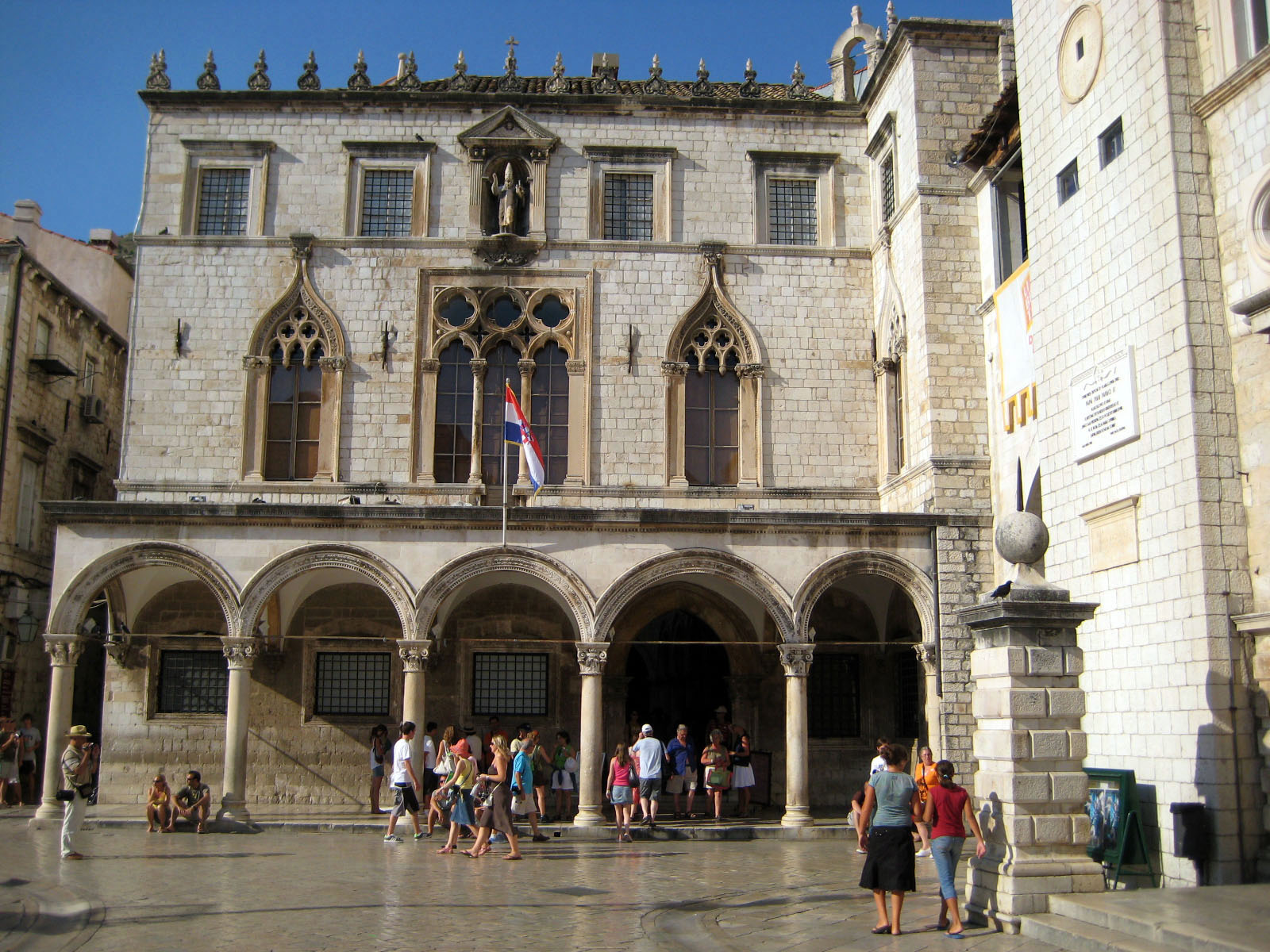
A lot of the old renaissance buildings collapsed in the big 1667 earthquake but the Venetian looking Sponza Palace still remains standing. It used to function as the Customs house and Mint. The old Ragusans prided themselves on their honesty and printed above the central archway of the inner courtyard is the motto “As I weigh merchandise with these scales, God is also weighing me.”
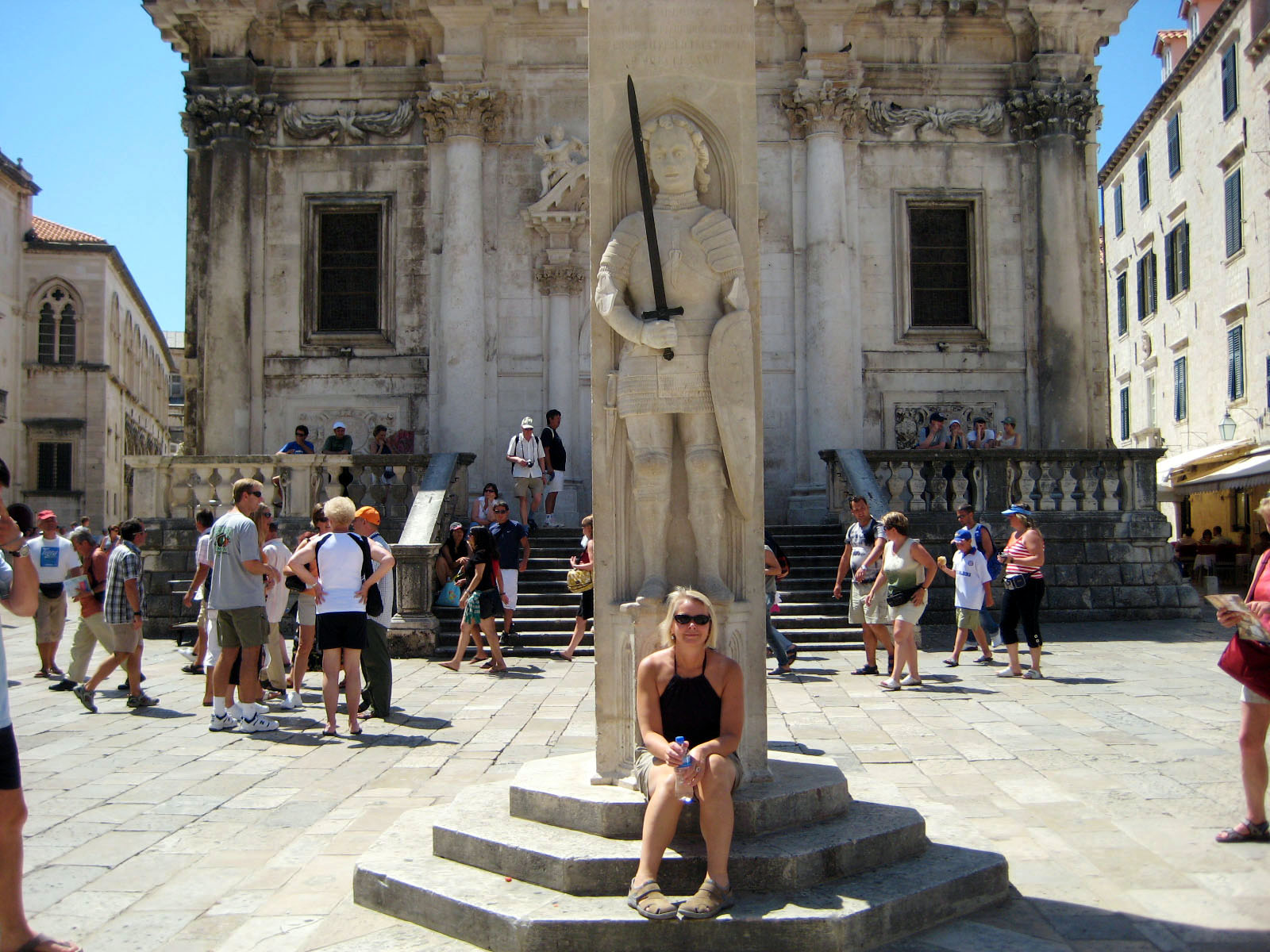 Outside of the Sponza Palace and in front of the main cathedral is the Orlando Column (Orlando Furioso) erected in 1419, made in the image of Roland, Count of Brittany and nephew of Charlemange, the hero of the Song of Roland.
Outside of the Sponza Palace and in front of the main cathedral is the Orlando Column (Orlando Furioso) erected in 1419, made in the image of Roland, Count of Brittany and nephew of Charlemange, the hero of the Song of Roland.
According to the Ragusan legend, Orlando led an army of Ragusans against the Saracens in the 9th century, which is somewhat confusing since according to the “Song of Roland”, he died in 778 at Roncevalles in northern Spain, in an attack by the Basque Moors. But through the miracle of revisionist history, here he is,still protecting the city. In his hand is the famous sword “Durendel”, once belonged to Hector of Troy and given to Roland by the magician Maugris. Legend says that hidden in the hilt of the sword is a thread of the Virgin Mary’s cloak, one of St Peter’s teeth, a hair from the head of St Denis and a drop of St Basil’s blood. It was invincible, and as Roland was about to meet his death, he hurled it into a poison river rather that have it end up in the hands of the enemy.
A few years back we were at the fortress of Rocamadour in the Dordogne region of France (see 2002 post on the Dordogne). In this mountain city they believe the “real” Durandel is embedded into a crack the stone face of the castle fortress. It’s also chained to the rock to make sure it didn’t end up in the hands of thieves or tourists.
Aren’t myths and legends fun?
In the plinth under the statue is a faint straight line, supposedly the length of Orlando’s forearm. It was used as the measure of a “Dubrovacki lakat” at 51.2 centimeters (around 20”), the official length of cloth. The column is just across the square from the customs house so this was probably the main marketplace where cloth merchants would sell their goods.
The Cathedral is dedicated to St Blaise, who body parts are deposited all over the city, his arms, a leg and his head. We saw the ornate armored leg in the Franciscan Friary but we never got to see the rest of the parts in the Cathedral. His right arm is covered with 30 engraved rectangular images of the saints. In 1925, a tourist stole one of them. A more efficient caretaker now guards the remaining 29.
And amongst the more bizarre treasures of the Cathedral is the “ diaper of Jesus” (I have no idea) that was kept by nuns at the convent of St Clare till the 1667 earthquake when it was transferred to the treasury and put in a silver chest. The nuns of the St Clare orphanage used to cut a small piece from it to give to women having problems with childbirth. Since I really didn’t didn’t see the “diaper”, I have no idea how much of it still remains, if any.
Ragusa was a very open minded, liberal and forward thinking nation even back in the 14th century and 15th centuries. State sponsored medical services to the city were introduced in 1301, services for senior citizens began in 1347, slave trading was abolished in 1418, the first orphanage opened up in 1432, and the first pharmacy in the Franciscan Friary opened in 1317. It’s still open for business. You can still buy crèmes and lotions dated 1317, apparently made from the original formula.
 Aside from the Music Festival and concrete and stone beaches, you have a choice from dozens of restaurants (Konoba) serving fresh seafood; squid, prawns, octopus, John Dory, Sea Bass, Gilthead, Mussels Bouzzara (local stew), risotto nero (in squid ink), langoustines, lobster and other local catch I can’t remember. Everything is cooked with a healthy dose of butter.
Aside from the Music Festival and concrete and stone beaches, you have a choice from dozens of restaurants (Konoba) serving fresh seafood; squid, prawns, octopus, John Dory, Sea Bass, Gilthead, Mussels Bouzzara (local stew), risotto nero (in squid ink), langoustines, lobster and other local catch I can’t remember. Everything is cooked with a healthy dose of butter.
The wines are also worth mentioning. Years back the wine was so potent; the Croatians would dilute it with water. These days they are world class. We enjoyed the Dingac wines a lot. The Plavac Mali grape used in making a lot of the Croatian wines is rumored be the original source of American Zinfandel.
Dubrovnik is also noted for its love of Water Polo; kind of a combination of swimming and European style handball (soccer using hands instead of feet). It’s not just a sport over here, it a religion.
The sport goes back to the early 1900’s but it’s popularity really hit in the 1950s. In the 1980s, the Dubrovnik “Wild League” opened up and now there are as many as 1100 players and 55 clubs. Last summer there were over 27,000 spectators watching the 100 games played. In the early years of the game, the object wasn’t just to win the game, but also to pull the referee into the sea.
You must be logged in to post a comment.